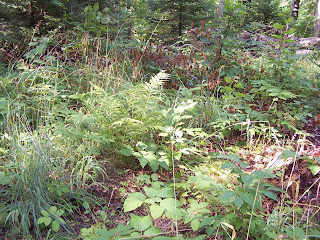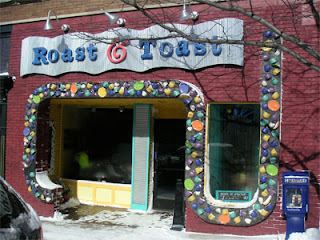This design, like the Cake, Pasta and Bubbles designs, is derived from the fact that sunflowers are members of the Asteraceae family, formerly known as the Compositae. The flowers of these plants are thought to be the most highly evolved flowers, composed as they are of ray flowers around the edge of the flower head and characterized by relatively elaborate petals, and disk flowers, which fill in the center field and whose petals are relatively inconspicuous. The disk flowers open sequentially over a period of days, from the center working their way outward, making these highly-desirable plants for native pollinators (leading to high seed production) and, later, attracting birds and other animals who eat those seeds. The Blossom design is another interpretation of this structure, with the typical sunflower petals indicating the ray flowers and cut-out florets for the disk flowers.
 |
| Kemper Klay Kutters - Florets |
Having cut out a bunch of florets, I score and slip the sunflower's center and, applying slip to the back of each floret, apply them to the flower's center, working from the outside to the center, positioning them to get maximum coverage without overlapping. It's a good idea to use a fair but of slip, as that will allow you to move them around a bit as you work toward the center, when things can get a bit cramped.
The sunflower is dried to leather hard, pulled off the mold. Holes for wire are punched in the sides between petals. (I usually get about 15 petals on a Ginormous Sunflower and I position the holes so they are three petals to the left and right of the gap between base petals with a centered middle petal so that will be at the top when the Sunflower is displayed.) I also apply an angle-cut section of a one-inch-diameter clay cylinder I fabricate by forming a clay slab around a length of one-inch copper tubing to take a 3/4" copper fitting so the sunflower can be put on a stake by its final owner. Once the flower is bone dry, I bisque fire.
For glazing, I, once again, use Amaco's Potter's Choice glazes. The Temmoku is the workhorse of my glaze palette, employed for the centers of all Fancy and Deluxe Sunflowers, as well as for some of my Cat-tails, Toad Houses and Bird Houses. What makes this glaze so good in the context of my work is how its appearance varies depending on the quality of the surface to which it is applied. For the petals I used Oil Spot from the same glaze series, which is actually a fairly good reproduction of the Oil Spot glaze I used when I first took classes with Gene Pluhar through Grosse Pointe Community Education. This glaze has a rich, satin finish that refracts the light rather than reflecting it, making for a more subtle composition.























